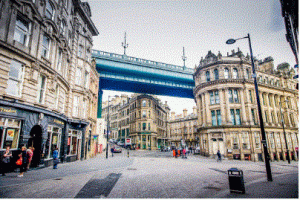
Britain’s literary history is rich with stories, not just on the page but in the walls and rooms where some of the world’s most celebrated authors lived and worked. Touring these preserved homes offers an intimate glimpse into their lives, from the writing desks where masterpieces were penned to the gardens and landscapes that sparked their imaginations. Walking through these spaces feels like peeling back the layers of a story, revealing hidden details and personal touches. It is much like the thrill of unlocking a bonus round in a game of online roulette, where each discovery adds an extra spark of excitement.
The Brontë Parsonage Museum, Haworth
In the Yorkshire village of Haworth stands the former home of Charlotte, Emily, and Anne Brontë. The moors stretch out beyond the windows, a landscape that shaped Wuthering Heights and Jane Eyre. Inside, the rooms remain much as they were in the sisters’ time, complete with personal belongings and handwritten manuscripts. It is a place where you can almost hear the scratch of pen on paper. The feeling is one of connection and quiet awe, as though you’ve stumbled upon a hidden scene from their lives.
Shakespeare’s Birthplace, Stratford-upon-Avon
The timbered house on Henley Street is where the Bard first opened his eyes to the world. Shakespeare’s birthplace offers not only a look at his early life but also a journey back into Elizabethan England. Costumed guides and period furniture transport you to the 16th century, making it easy to imagine a young William soaking up the sights and sounds that would later fill his plays. Visiting here is like witnessing the origin point of a jackpot-winning streak in literature.
Greenway, Devon – Agatha Christie’s Holiday Home
Overlooking the River Dart, Greenway was the beloved holiday retreat of Agatha Christie. This elegant Georgian house is filled with the family’s collections, from ceramics to first editions. The grounds offer lush pathways and hidden corners, perfect for a crime novel plot twist. For fans of the Queen of Crime, stepping into Greenway feels like turning the page to a long-lost chapter, one that reveals the quieter, more personal side of the writer.
Hill Top, Cumbria – Beatrix Potter’s Cottage
Hill Top is more than a preserved home; it is a living storybook. Every room in this 17th-century farmhouse contains objects and furniture that inspired Beatrix Potter’s illustrations. From the charming garden to the cosy kitchen, it is easy to spot details that found their way into her tales. The experience is a gentle reminder that great stories often begin with everyday observations, much like the small wins in a game that build toward a thrilling finale.
Bateman’s, East Sussex – Rudyard Kipling’s Refuge
This 17th-century Jacobean house in the Sussex countryside was Kipling’s sanctuary. Bateman’s remains much as he left it, complete with his study, personal library, and mementos from his travels. The setting is serene yet powerful, a place where the author of The Jungle Book and Kim found both peace and inspiration. It is the kind of environment that feels charged with creative potential, the way a roulette table can hum with anticipation before the ball lands.
Monk’s House, East Sussex – Virginia Woolf’s Retreat
A modest country home with a sprawling garden, Monk’s House was Virginia Woolf’s escape from the bustle of London. Inside, her writing room remains a focal point, offering views of the Downs. Walking through the rooms, you sense the rhythm of her days and the quiet discipline that produced works like Mrs Dalloway. The visit offers moments of pause and reflection, punctuated by bursts of inspiration, much like the ebb and flow of a well-played game.
Why Literary Homes Hold Such Appeal
Stepping inside an author’s home is about more than seeing where they lived. It is about understanding the personal spaces that shaped their creativity. Each room offers a clue, from the books on the shelves to the worn armchair by the fire. These details create a layered narrative, one that fans can piece together in their own minds. This gradual uncovering of secrets feels akin to bonus features in a game, where each reveal builds on the last until the full picture emerges.
Connecting Literature to the Thrill of Discovery
Just as a reader dives into a novel with the hope of uncovering its twists and revelations, a visitor to a literary home walks through doorways anticipating small yet meaningful surprises. Whether it is finding the exact desk where an author penned their most famous work or spotting a view they once described in prose, these moments carry a personal magic. They mirror the unpredictable joy that comes with gaming, where each turn or spin offers the chance for something special.
Planning Your Literary Home Tour
The UK offers countless opportunities for literary-themed travel. Many of these homes are set in picturesque villages or striking countryside, adding to the experience. Combining several into a single itinerary can turn a trip into a narrative of its own, with each stop revealing a new chapter in Britain’s literary heritage. Visiting in different seasons can also change the atmosphere.
